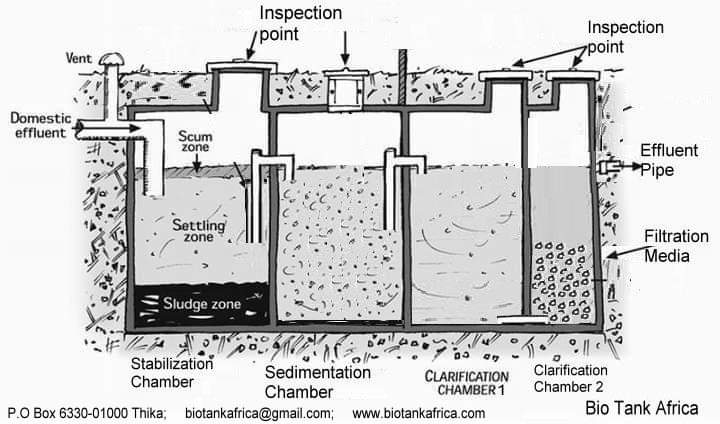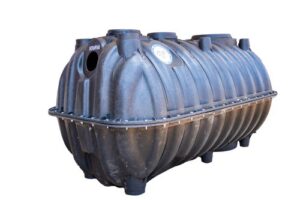Wastewater is a term that encompasses the water that has been used in household activities. This includes washing dishes, taking showers, and flushing toilets. Wastewater is created when these activities take place in homes and businesses. It is either transported into a sewage treatment plant or in the case of low populations disposed in sanitation systems like the Biodigester Septic tank. Waste water can be further classified as gray water and black water. Gray water comes from showers, baths, dishwashers and all sinks except the kitchen sink while black water is from toilets and kitchen sinks
It is estimated that 15litres of wastewater are generated per person every day in developed countries while 6litres of wastewater is generated in developing counties. Wastewater is a major cause of water pollution. Wastewater contains organic and inorganic materials that are hazardous to the environment and human health. It also contains nutrients that lead to algae blooms and harmful bacteria that can pollute our drinking water.
There are four different types of wastewater treatment systems in the market. These are:
Trickling Filters wastewater Treatment System
Trickling filters are constructed with layers of sand and gravel that are stacked on top of each other. A layer of gravel is first laid down then a layer of sand is laid down on top which will allow water to filter through the layers. Trickling filters were among the first types of wastewater treatment systems to be invented, and they’re still used today for many applications.
Activated Sludge System
Activated sludge system is a biological wastewater treatment system in which air or oxygen is introduced. The bacteria in the activated sludge feeds on organic matter and converts it into carbon dioxide, water, and nitrogen. The activated sludge system is widely used for municipal wastewater treatment because it is cheap and easy to maintain.
Chemical Wastewater Treatment
Chemical wastewater treatment processes include chemical precipitation (coagulation, flocculation), ion exchange, neutralization, adsorption, and disinfection (chlorination/dichlorination, ozone, UV light).
Biological Nutrient Removal System
Biological nutrient removal system is a biological wastewater treatment system that removes nitrogen from the waste stream through nitrification and denitrification processes. Nitrogen can be removed from both liquid and solid waste streams by this easy, efficient process which is environmentally sustainable. The biological nutrient removal system removes nitrogen and phosphorous that would otherwise cause eutrophication.
Wastewater Treatment Process
The wastewater treatment process is one of the most important parts in maintaining a healthy environment The wastewater treatment process can be divided into three steps: collection, treatment, and reuse.
1. Collection of the wastewater
Wastewater is either collected into sanitation systems that allow treatment of the wastewater or transported to wastewater treatment plants.
2. Treatment of the wastewater
The wastewater treatment system includes three major steps: preliminary treatment, primary treatment and secondary treatment. The first step, preliminary treatment, is just that – it aims to remove large particles from the water before it enters the primary tanks. In primary wastewater treatment tanks, bacteria break down organic matter and consume dissolved oxygen from the water. In secondary treatment, bacteria are used to break down nitrogenous materials, settle out suspended solids, and scrub the sides of the tank with their slime.
3. Reuse of the wastewater
This is a process by which contaminated water is cleaned and consequently released back into the environment. In the past wastewater would not be re-used. This water can be recycled for many different purposes including flushing toilets, irrigation, and more! Wastewater is one of the most valuable resources on Earth because it is created every day and should therefore be recycled.
In conclusion waste water treatment has many benefits. These include; reducing water pollution, conserving natural resources and reducing greenhouse gas emissions from untreated waste water. Treatment of waste water should be encouraged whether done domestically or through industrial means.
Summary
Wastewater is water that has been used to wash dishes, take showers, and flush toilets. Wastewater treatment is a process that removes impurities from wastewater. It is an important step in the management of wastewater. Read the article below to see various ways of treating waste water.




